Best Golf Simulator 2025 - Cutting Edge Technology At Home
If you want to find a way to practice your golf game at home then we've listed the best golf simulators currently available right now
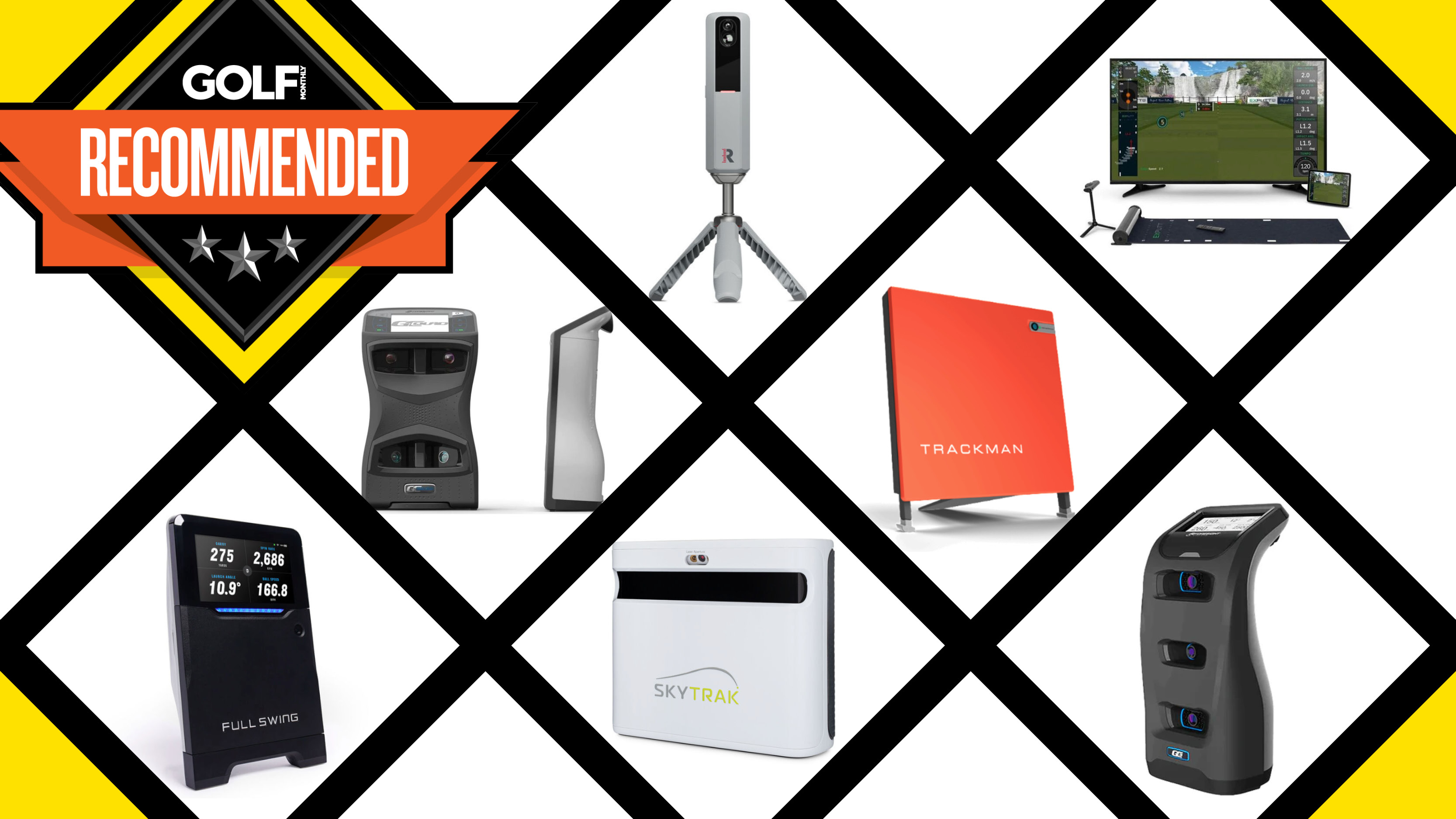

Ben Hogan famously said that the secret to better golf was to be found “in the dirt” and for many golfers practice is a vital component of their game. While the practice ground at Shady Oaks Country Club in Fort Worth, TX was where Hogan did much of his digging in pursuit of golfing perfection, not all golfers can afford to spend hours at the range . Enter the home practice suite.
Setting up one of the best golf nets in your garden, garage or spare room allows golfers the luxury of hitting a few balls when it’s most convenient, no matter the weather or the time of day. The ‘step up’ from a net is a golf simulator. This piece of tech enables golfers to practice in a virtual world, which attempts to replicate the ‘real game’.
The best golf simulators not only offer golfers the chance to play an array of virtual courses, they also provide real time feedback. Typically this not only means you’ll get data such as club and ball speed, distance and carry, but also information on spin and launch angle, smash factor and more.
Understandably, getting the perfect indoor setup such as this can be very expensive. But there are more affordable options too. If you’re the owner of one of the aforementioned golf nets then you can pair this with one of the budget launch monitors to create a home practice environment that should do wonders for your game without breaking the bank.
To help you find the right setup for you we’ve tested a wide range of models, from range-topping simulators to more affordable portable launch monitors, and compiled our favorites right here. We also recommend taking a look at our how to choose section at the bottom of this page too, which discusses the factors you’ll want to consider when buying a home simulator.
The Quick List
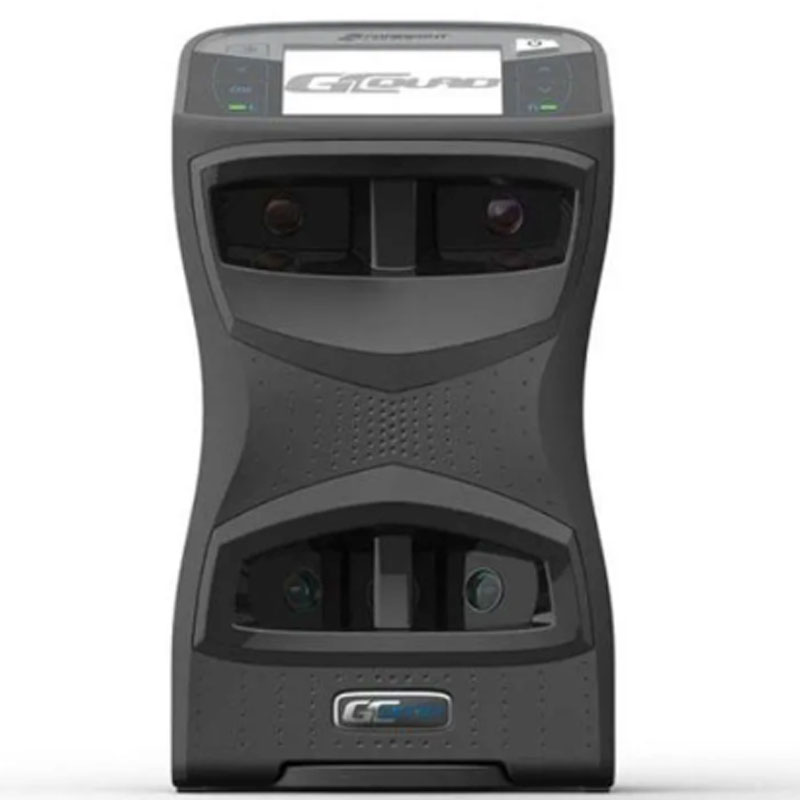
With Tour level accuracy and analytics, Foresight have created a unit which has a clear, built in display that provides accurate data quickly.
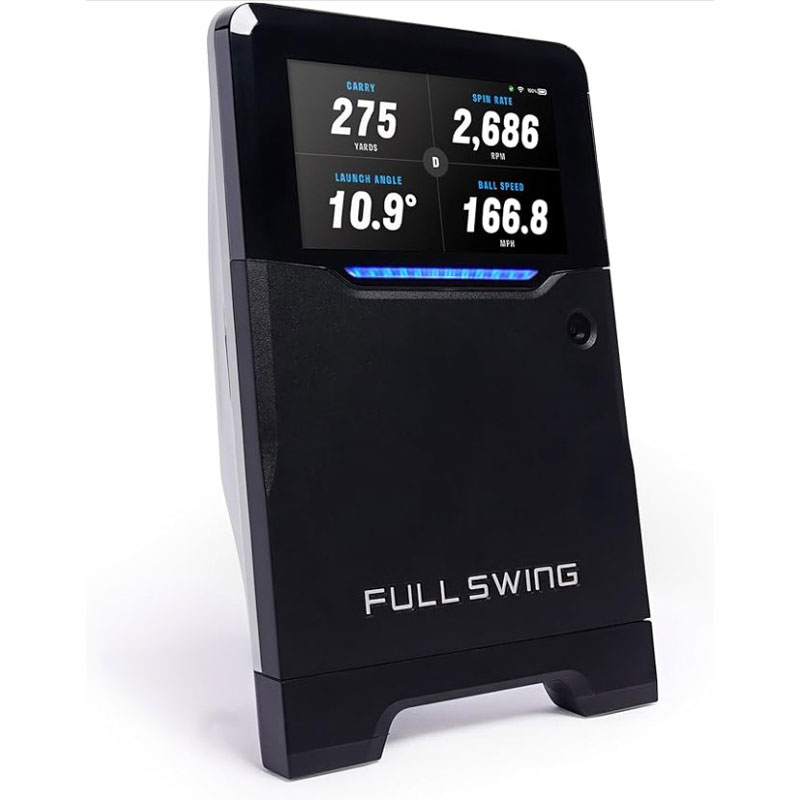
Given its versatility, accuracy and attention to detail, you could make a case for Full Swing Golf being the best indoor simulator experience that exists.
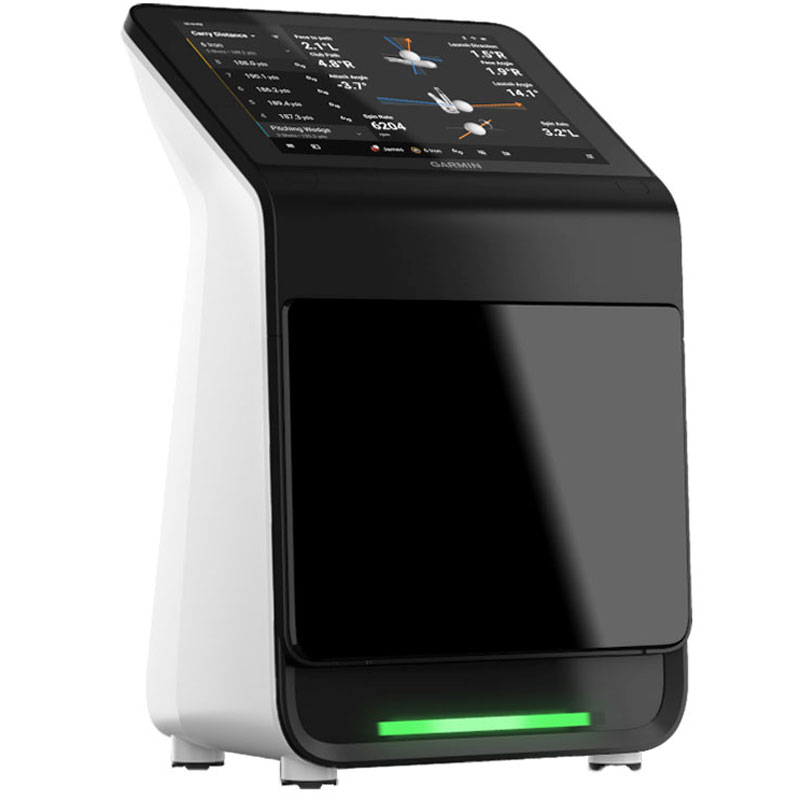
The experience with the R50 lived up to all expectations. It is simple to set up and use, the display is detailed and clear, the data accurate and simulator experience near faultless.
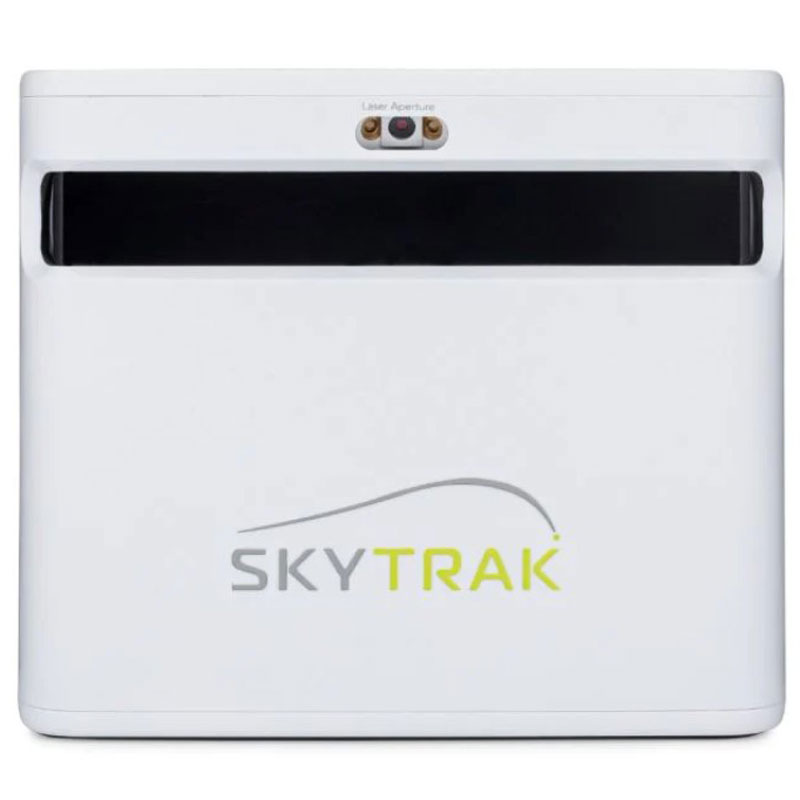
The SkyTrak+ is a big step forward versus the prior model and continues to represent great value for money in an increasingly competitive space.

A good value and easy to use, the MLM2 Pro is a great practice tool that provides accurate data and doubles up as a decent golf simulator.

The GC3 is a comprehensive and versatile launch monitor that looks to offer decent value for money given all the features on offer.
Load the next 3 products
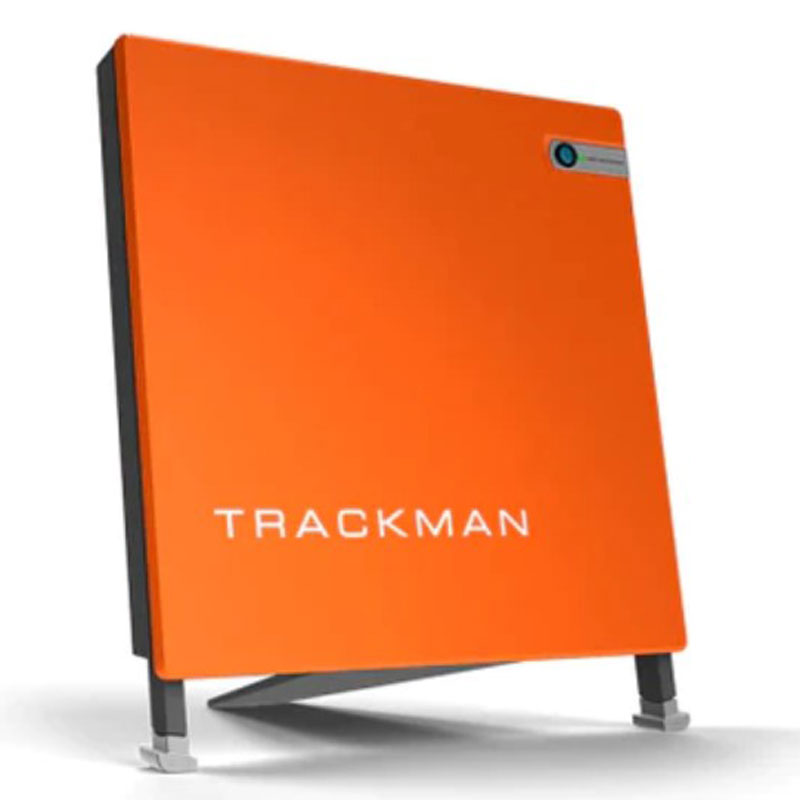
The Trackman launch monitor is perfect for golfers of all abilities and provides accurate and reliable data that will help improve your game.
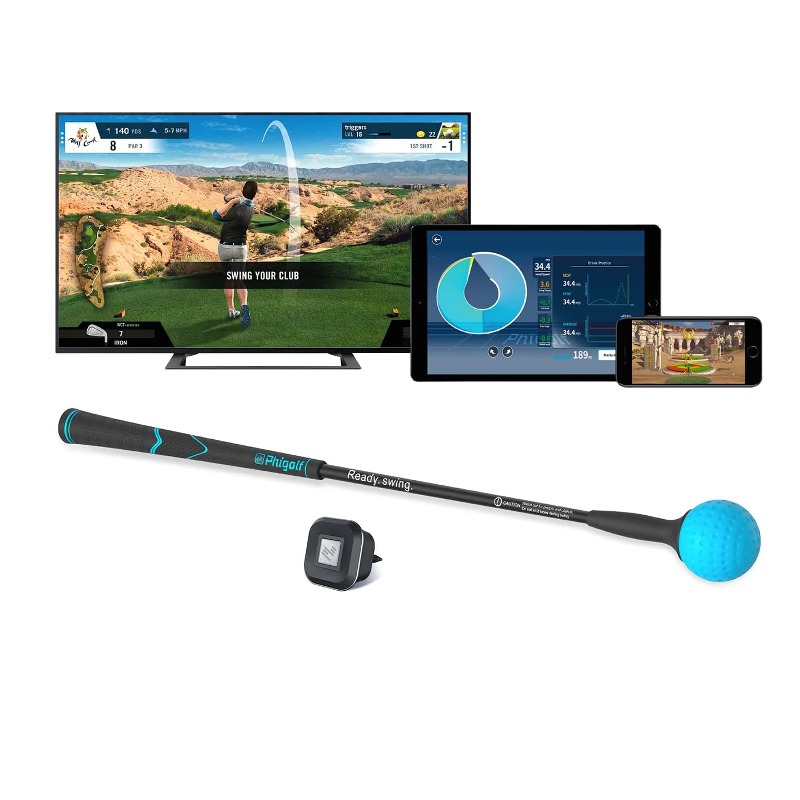
A superb alternative to having to go to the driving range to work on your swing. The Phigolf 2 simulator provides extensive feedback on a range of data.
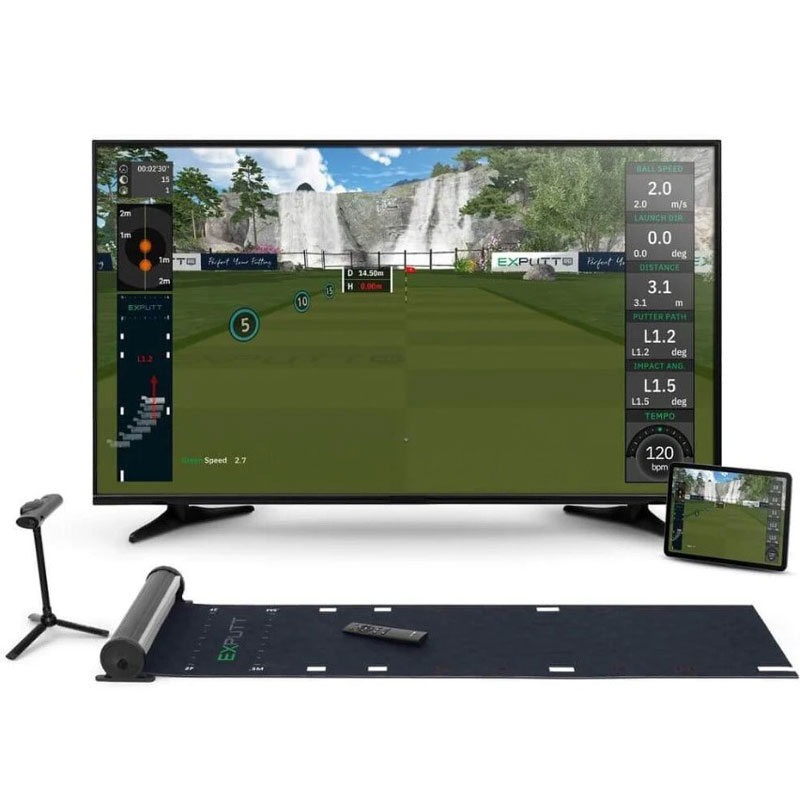
The Exputt RG Putting Simulator is a fantastic and innovative piece of kit that offers incredible feedback on your stroke as well as endless fun at home.
Best Golf Simulator
Our favorite
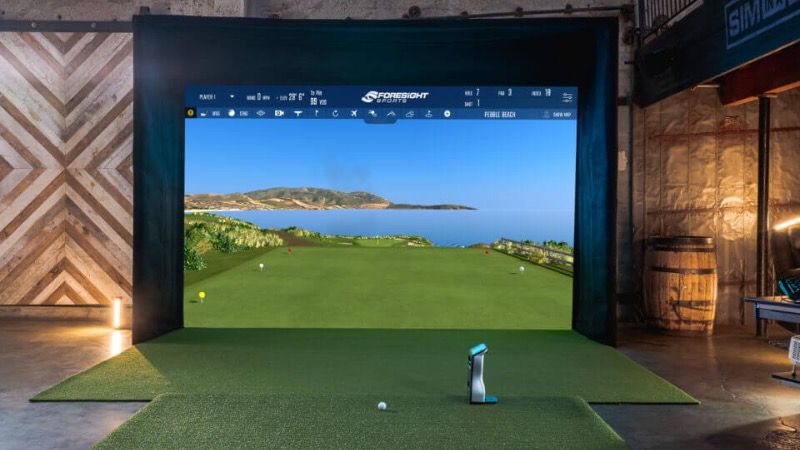
A Foresight Sports Simulator setup for play
Foresight Sports Simulator
Specifications
Reasons to buy
Reasons to avoid
The Foresight GCQuad is favored by many tour pros, while the brand’s other models, the Hawk, GC3, GC2 or GC2 HMT are equally popular with players of all abilities. The Simulator Package offers both a lower priced Sim-In-A-Box or Net-Ready package, which enables you to take your existing Foresight monitor and create a simulator at home.
There is also the premium package. Here you’re getting the Foresight monitor of your choice as well as a high performance laptop. Combined you’re getting an impressive setup that allows you to ‘practice smarter’, thanks to the array of metrics and the degree of accuracy - think path, lie angle, angle of attack, strike location and more as well as the more obvious numbers such as ball and club speed, launch, carry and distance.
The added bonus of the simulator is that it might just make practice a little more fun, too. Here you can play virtual courses and enjoy a number of practice games designed to sharpen different areas of your game.
We love just how clear the display screen is, with the data delivered in easy-to-understand format. And the launch monitor is portable enough to take to the range with you. The downside? You do need a fair amount of room for the full simulator set-up.
Used by Tiger Woods
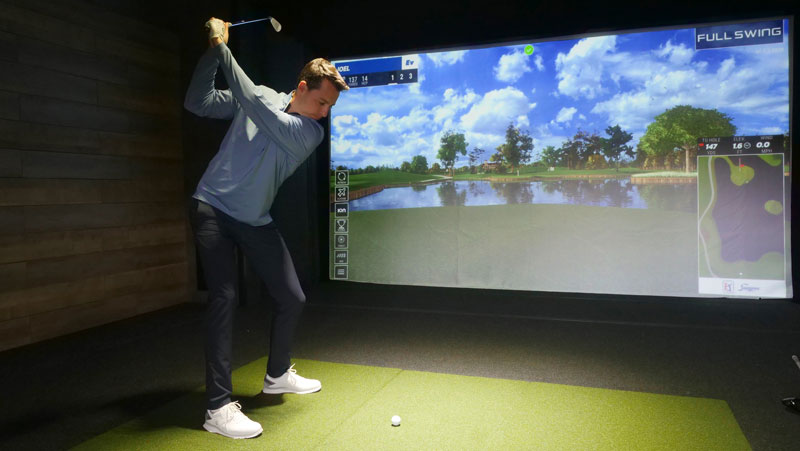

Joel Tadman testing the Full Swing Golf Simulator
Specifications
Reasons to buy
Reasons to avoid
That Tiger Woods endorses this simulator, and has the 16-foot widescreen model in his home, should tell us plenty about its quality and performance.
Certainly the Full Swing simulator is an impressive piece of kit. Invest in this simulator and you get a solid wood enclosure, a cinema quality projector, an energy absorbing diffuser screen, and a high-quality carpet to hit from. We were fortunate enough to test out this Pro series option at Silvermere Golf & Leisure centre in Surrey and came away appreciating what all the hype had been about.
The simulator itself serves up a huge amount of ball and club data. With its patented dual sensor tech and high-speed camera, along with a line tracking sensor, it allows you to see the flight of the ball on the screen. We're impressed with just how accurate these trajectories were, all delivered in real time and without any delay. After you’ve hit a shot you can watch a replay from an overhead angle, which provides fantastic feedback on the club path and the quality of the strike in general.
A big appeal of the best golf simulators is the ability to play world famous courses, and here you get 84 virtual layouts, including TPC Sawgrass, home of the Players Championship. We loved testing our game on the course’s infamous par-3 17th. An added bonus, and perhaps a necessary one given the cost of this set up, is that you can use the screen as a home cinema when you’re not hitting balls - and if you have other sportspeople in the family it can also be use to hone other ball games, including football, rugby and cricket.
- Read our full Full Swing Golf Simulator Review
Best features

Specifications
Reasons to buy
Reasons to avoid
There was a lot of buzz around the R50 Launch Monitor from Garmin given it combined a launch monitor with simulator capabilities. As such it is a pretty sizeable unit, and yet it isn't overly heavy at just above 4kg. It has a 10-inch full color touchscreen which was bright, crystal clear and I felt very responsive too. Three cameras track 15 club and data points, as well as ball flight too, and in my testing the data stacked up nicely with competitors. I didn't see any real delay in getting the data although to get club data it was a little annoying having to apply a sticker to the top of each clubface.
I really enjoyed the Play feature. The graphics are outstanding and there are 43,000 courses to choose from, which is one of the highest numbers on the market. Importantly I found the courses to be realistic enough - it makes power deductions for different lies and it shows you the breaks on the greens.
All in all, my experience with the Approach R50 was an extremely positive one and it absolutely lived up to all the hype. It is not totally perfect, with a couple of minor points stopping it from getting the highest review verdict from me, but I really do think the R50 has moved the needle in the golf simulator space, as well as on the monitor market.
- Read our full Garmin Approach R50 review
Best course choice
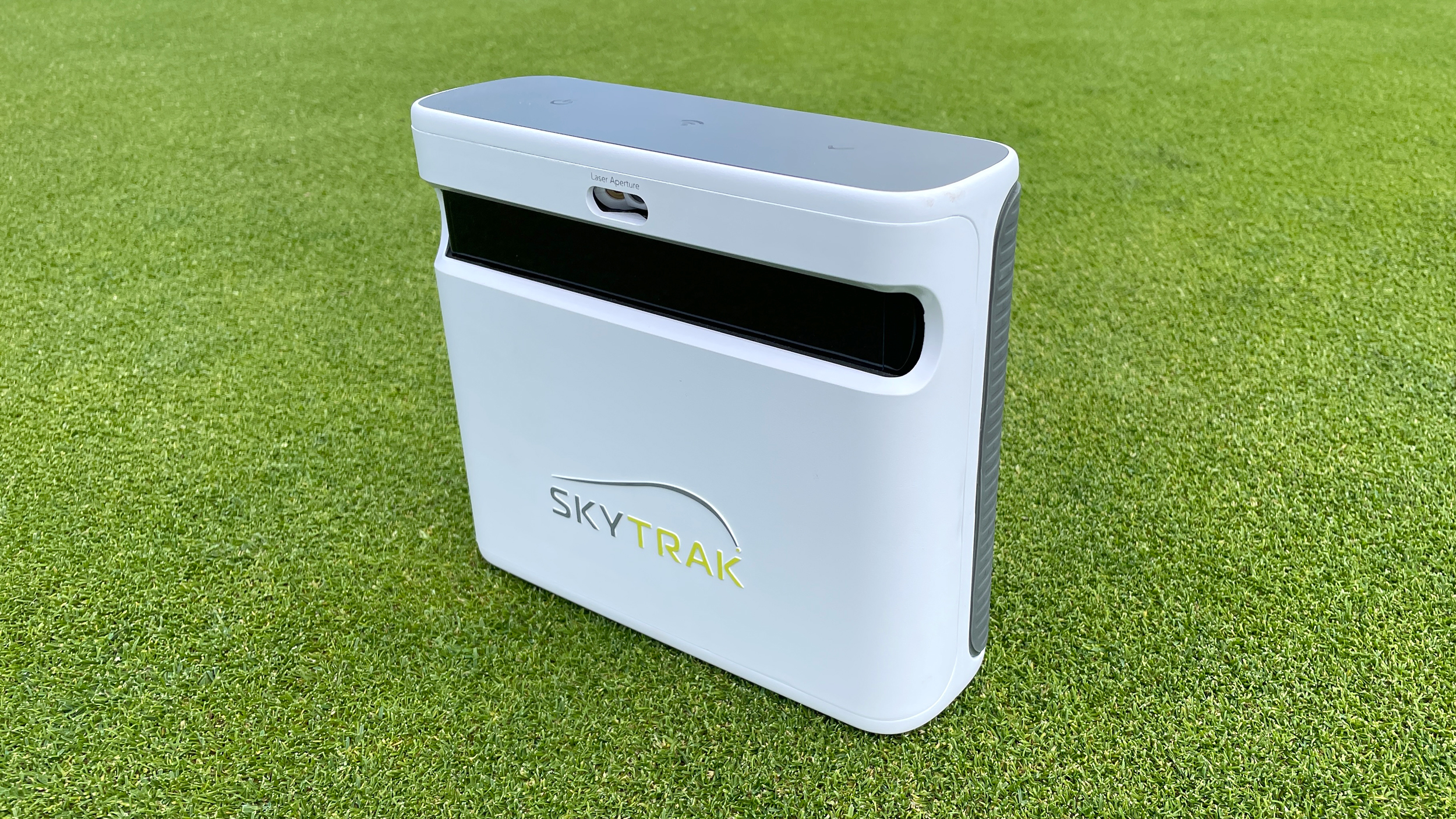
SkyTrak+ Launch Monitor sitting on grass
Specifications
Reasons to buy
Reasons to avoid
If you’re buying a simulator largely because you want to play a wide range of virtual courses, then the Skytrak + monitor could be for you. By joining the companion app and syncing it all up to your tablet and computer you’ll have some 100,000 courses at your fingertips, including US Open venues like Pebble Beach and Torrey Pines.
But this keenly priced monitor also delivers plenty of data too, both ball and club, including club and ball speed, spin and launch angles and path and face angle. We were impressed with the levels of accuracy too, thanks in large part to the learning algorithms used. Coupled with an easy-to-use app and it adds up to a great user experience - and importantly one that doesn’t cost the earth either. Team this up with one of the best golf nets and you’ll have an effective home practice space that you can use year round.
If there are any negatives, we would have liked to have seen a carry case included, and the annual fee required to gain access to the app does mean some added cost.
- Read our full SkyTrak+ Launch Monitor Review
Most portable

Rapsodo MLM2PRO Launch Monitor sitting on the ground
Specifications
Reasons to buy
Reasons to avoid
The beauty of a portable launch monitor is the versatility it offers - you can quickly set it up at home and use it with your golf net or screen or pop it in your golf bag to take to the range. And there aren’t many more portable than the Rapsodo MLM2PRO.
We loved just how easy it is to set up. Alongside the launch monitor you get a tripod stand and some Callaway RPT Chrome X golf balls that are for indoor use only and marked to help you achieve accurate spin and rotation data. Out of the box, all you need to do is download the app, register your unit and then connect to the device of your choice. From here you simply select one of the three modes - practice, combine or simulation, and off you go. We particularly liked the Combine option, which serves up a 24-shot test, allowing you to better assess the current state of your game. Practicing your weaknesses is crucial to lowering your handicap, and this tool allows you to practice with purpose.
As for simulated golf courses, the MLM2PRO app gives you access to a huge number, around 30,000 in total, as well as additional features such as a virtual driving range. Impressively you get a full year of Premium Membership benefits for free with the purchase of the launch monitor - after this it’s $199 annually.
Another benefit of the MLM2PRO is the fact that it features two camera angles - Impact Vision and Shot Vision. The former records at 240 frames a second and left us impressed. We could see the path of the clubhead with clarity, providing us with a clear picture of the strike and which part of the clubface the ball was contacting. The latter is a wide angle option that tracks the ball from behind your swing.
- Read our full Rapsodo MLM2PRO Launch Monitor Review
Highly accurate
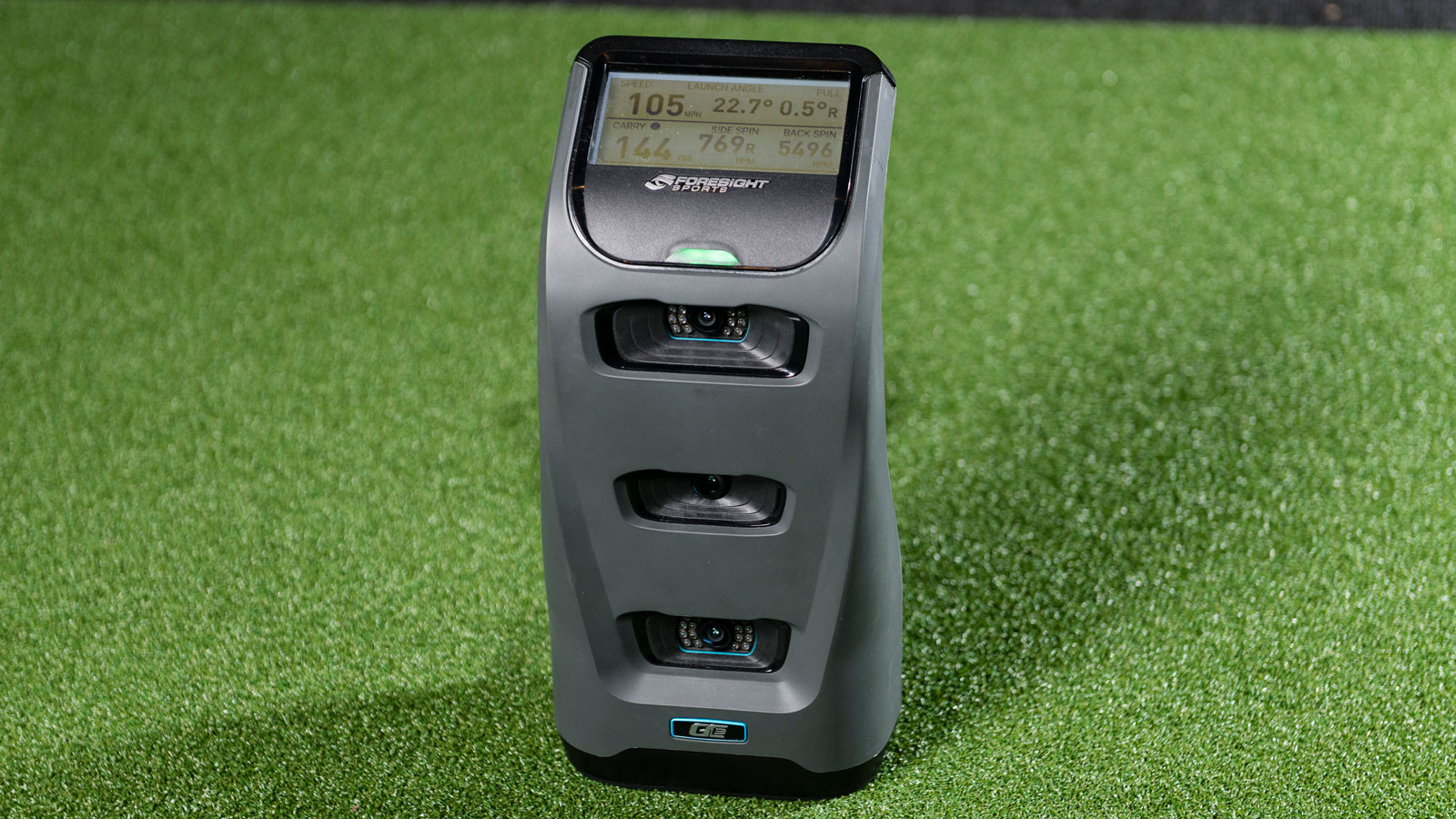
Specifications
Reasons to buy
Reasons to avoid
Accuracy is key when it comes to launch monitors and simulators and the GC3 from Foresight is just that.
So what makes it one of the best photometric monitors on the market? Its accuracy in part comes from the inbuilt barometric sensor, which enables it to take into account real world conditions, such as humidity and altitude. We found this allowed us to really trust the data we were receiving, as well as making the numbers more applicable when we were out on the course.
The GC3 uses three cameras to capture ball and club data, including speed, launch, carry, club path and angle of attack, with the app showing the trajectory of each shot. It does lack full putting data, but if you're after a portable device (it weighs around 2kg or 4.5 lbs) that delivers supreme accuracy then it’s certainly worthy of consideration.
- Read our full Foresight Sports GC3 Launch Monitor Review
A Tour favorite

Man testing the Trackman simulator
Specifications
Reasons to buy
Reasons to avoid
Such is the popularity of Trackman with the world’s best players and coaches it’s almost become a byword for launch monitors and golf simulators. And with good reason.
The latest iteration, Trackman 4, uses its patented multi-sensor technology to deliver impressive accuracy across a wide range of data; alongside the in-built camera it uses two radars to reliably and consistently track and record.
All of this tech has made the Trackman a fixture on the range at tournaments across the globe. But it’s equally at home, well, at home. The simulator experience serves up over 160 pre-installed courses alongside club fitting software, putting analysis, skill tests, swing videos and even the option to compete in online tournaments - if you’re aware of the Next Golf Tour, which sees players compete on virtual courses, it’s powered by Trackman 4.
The obvious downside is the cost. The launch monitor alone will set you back over $20,000, with the home simulator setup requiring you to dig yet deeper into your pockets.
- Read our full Trackman Simulator Review
Most fun
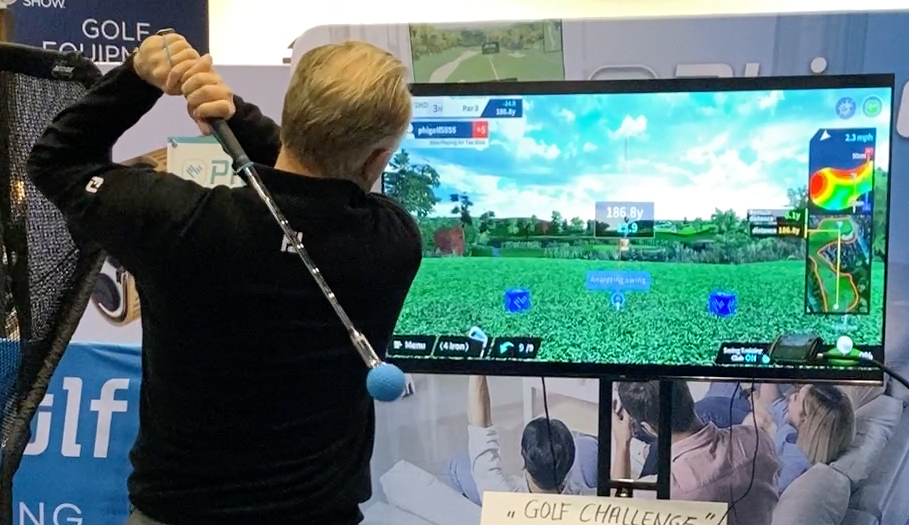
Man testing the Phigolf 2 Portable Simulator
Specifications
Reasons to buy
Reasons to avoid
If Trackman is the tool of the professional, then PhiGolf 2 is a simulator well suited to the entire family.
It’s based around a motion sensor that you attach to a golf club or the swing trainer supplied - it’s been weighted to feel like a real club and being smaller allows you to play and practice in rooms with lower ceilings or that lack space in general. Swing the club and the data is recorded and sent to the simulator app, which you’ll need to download to a tablet or smartphone. From here the numbers are used to show the ball’s trajectory, which appears on your TV, thanks to mirroring technology.
And it really is great fun. We were impressed with the degree of feedback you get, with each swing of the club delivering data from club head speed to angle of attack, as well as the distance you’ve hit the ball. With the ability to pair it up with a number of third-party apps such as World Golf Tour and E6 Connect, you can play iconic courses from around the world, including the Old Course at St Andrews - playing at the home of golf with all the family without leaving the living room is quite the experience!
- Read our full Phigolf 2 Portable Simulator Review
Best at home putting model
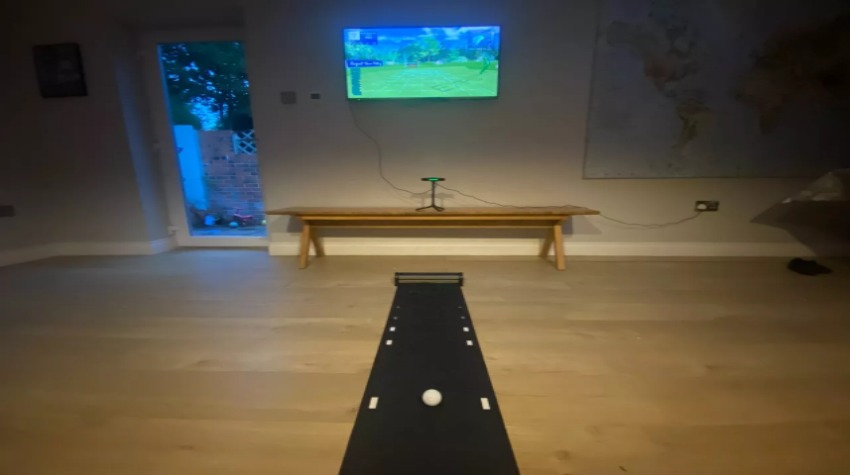
Testing the ExPutt RG Real-Time Golf Putting Simulator at home
Specifications
Reasons to buy
Reasons to avoid
If there’s a sure way to lower your scores it’s to turn a number of those three putts into two. Typically working on your putting at home has meant investing in one of the best putting mats but with the ExPutt RG simulator you can take this a step further and practice with the flatstick in a virtual environment, testing your putting prowess on a range of greens from courses across the world.
It’s a compact unit that plugs directly into your television or tablet. You then place the camera at the end of your putting mat, which in turn works out just how hard, and how well, you have struck the putt. It does this by measuring the impact angle, putter path and more - valuable data when it comes to working on why you're, say, missing putts to the right.
All this data is delivered in clear graphs and visuals and we were impressed with just how user friendly the ExPutt RG is, from ease of set up to understanding the numbers. Any device that allows you to practice with purpose should pay dividends and this does just that, making it one of the best putting aids we've reviewed.
- Read our full Exputt RG Putting Simulator Review
Specifications table
Model | Data | Portable | Courses |
Foresight Sports Simulator | Club and ball | Dependent on model | 20+ |
Full Swing Golf Simulator | Club and ball | No | 80+ |
SkyTrak+ Launch Monitor | Club and ball | Yes | 100,000 virtual |
Rapsodo MLM2PRO Launch Monitor | 13 metrics - 6 measured metrics - including spin rate and spin axis | Yes | 30,000 |
Foresight Sports GC3 Launch Monitor | Club and ball | Yes | N/A |
Trackman Simulator | Club and ball | Yes | 145 |
Phigolf 2 Portable Simulator | Swing metrics, swing analysis and putting-posture analysis | Yes (home setup) | 80+ |
Exputt RG Putting Simulator | Putting stroke data and impact angles | No | 70 |
How we test golf simulators
To test a golf simulator thoroughly we ensure that we test all the features on offer, using it with different clubs throughout the bag. We also evaluate just how easy it is to set up, how intuitive the software is and whether it’s portable. We also take into account the cost and whether it represents value for money - because our testers have used many simulators and launch monitors we’re well-placed to see how they stack up against each other.
It’s a comprehensive approach we take to all our testing, whether it be clubs, balls or clothing. It allows us to offer detailed, honest advice with the aim of helping you make informed choices. A good review can never be bought at Golf Monthly, so if a product gets our approval it’s because we genuinely believe in it. To read more about how we test our equipment, take a look at our testing methodology here.
How to choose a golf simulator
Like all areas of golf tech, there are now a wide number of golf simulators on the market. They come at a range of different price points, with different attributes. Because of their higher cost it’s important to consider a few factors before you buy.
1. Indoor/Outdoor Use
Are you planning on practicing both indoors and out, at home and at the range? If so you’re probably best to invest in just a launch monitor and then pair it with a golf net at home. However if you’re after a dedicated indoor practice setup then a full simulation package might suit your needs more.
2. Space/Size
Full simulator set-ups aren’t just costly, they also require a fair amount of space due to the need for a large screen and enclosure. You’ll need to make sure you have the square footage at home before you invest.
Even if you’re planning on using a launch monitor with a net you’ll need to ensure that your chosen space, be it the garden, garage or room in the house, has the space to allow you to swing unimpeded. If you want to practice with all the clubs in the bag you’ll need around 10 ft x 12 ft space to allow for driver swings - and if you’re indoors a ceiling height of at least 8ft-10ft.
3. Accuracy
Because you’ll want to use the numbers you’ve gained through your practice with a launch monitor out on the course, they need to be accurate. While most decent monitors deliver accurate readings, there are some that are more so than others, especially if they take into account real world factors, such as altitude, wind direction and humidity. Naturally monitors delivering this level of data are more expensive.
4. Metrics
Like accuracy, while all monitors will give you the basic numbers - ball and club speed, carry and distance - only some models have the capability to dig deeper into your swing. If you’re looking for club data, like path and angle of attack, or additional metrics like dispersion, then you need to spend a little more for the privilege.
5. Features
Next up, think about how many features you want your simulator to have. Are you just going to use it for golf practice? If so a cheaper model will suit you best whereas if you want more, then some designs offer the opportunity to play golf courses, GPS functionality, or even change the setup into a home entertainment system, or cinema.
6. Portability
The advantage a regular launch monitor has over a full simulator set up is the ability to move it around and take it with you. A portable monitor that comes with a carry case or can fit in your golf bag, means that you can comfortably carry it to the range with you, as well as move it around at home - ideal if you want to practice in the garden during the summer and then move indoors when it starts to get cold.
However, if you’re planning on building a dedicated practice space at home then a larger simulator with a screen and projector will work well for you
7. Price
Like much in life, with golf simulators and launch monitors you tend to get what you pay for. The most expensive models featured in this guide are beyond the budget of most but they do offer an impressive experience. But that’s not to say you can’t benefit greatly from the less expensive models, which still deliver plenty of data and can easily be paired with one of the best golf mats and best golf putting mats for use at home.
FAQs
Is a golf simulator worth it?
There is no denying a golf simulator can be expensive but at the end of the day you get immense return on your investment here. We all know practice is the way to get better at golf and a simulator allows you to get as much detailed information as possible which can therefore help you iron out weaknesses and improve. There is a reason most top professionals have simulators and that is because the feedback on offer is second to none.
And we should also acknowledge that they don't always cost an arm and a leg. Golf simulator technology ranges from fifty thousand dollar top-of-the-line models used by golf equipment manufacturers and world-class professionals, to entry-level consumer devices that can be taken to a driving range.
What is the difference between a simulator and golf net?
A golf net is a simple piece of kit designed to help people practice. Importantly, they do not give that much feedback aside from giving an idea of strike and possibly ball flight. A simulator gives a lot more information, on things like strike, ball flight, spin, launch and many more variables. Because of this, nets are a lot cheaper and an be a lot simpler to use.
How much does it cost to get a golf simulator?
Again, linking with the answer above, there are simulators for different aspects of the game and as such, there are models that come with different price tags. The Full Swing model used by Tiger Woods for example will cost thousands of dollars, whereas there are more budget-friendly options that are available as well. We would recommend being aware of how much money you are willing to spend on a simulator as a result.
What size room do I need for a golf simulator?
This will be entirely dependent on which type of simulator you want and which model you go for. For example, you can use the PuttOUT Putting Mat simulator pretty much anywhere, whereas you will need a large room for the Full Swing Golf Simulator. As a basic rule of thumb, to get a good golf simulator setup we would recommend having a set area of at least 12ft x 10ft x 8.5ft. The whole point is for you to be able to swing comfortably, safely and freely. Anything less than this will hinder your ability to do so.
Finally be sure to take a look at some of our other golf gear guides too, such as the best golf GPS, best golf watches, or the best golf rangefinders.
Get the Golf Monthly Newsletter
Subscribe to the Golf Monthly newsletter to stay up to date with all the latest tour news, equipment news, reviews, head-to-heads and buyer’s guides from our team of experienced experts.

Sam is Golf Monthly's Senior E-commerce Editor which mean's he oversees everything E-com related on the site.
This takes the form of creating and updating Buying Guides, reviews, and finding bargain prices for deals content.
Working with golf gear and equipment over the last seven years, Sam has quickly built outstanding knowledge and expertise on golf products ranging from drivers, to balls, to shoes.
He combines this knowledge with a passion for helping golfers get the best gear for them, and as such Sam manages a team of writers that look to deliver the most accurate, insightful, and informative reviews and buying advice. This is so the reader can find exactly what they are looking for, at a good price.
Additionally Sam oversees Golf Monthly voucher/coupon content which seeks to find you the best offers and promotions from well-known brands like Callaway, TaylorMade and many more.
Unfortunately, Sam is not a member of any club at the moment but regularly gets out on the golf course to keep up the facade of having a single-figure handicap.
-
 The Masters Final Round: TV Coverage, Live Streams, Start Times As Rory McIlroy Battles Bryson DeChambeau And History
The Masters Final Round: TV Coverage, Live Streams, Start Times As Rory McIlroy Battles Bryson DeChambeau And HistoryAll the info on live streams, TV broadcasts, and free coverage of one of the most hotly anticipated final days of any Major as McIlroy battles with DeChambeau
By Patrick Fletcher Published
-
 'I'm Not Going To Stand Here And Talk About Rory For 10 Minutes' - Shane Lowry Frustrated After Late Slip
'I'm Not Going To Stand Here And Talk About Rory For 10 Minutes' - Shane Lowry Frustrated After Late SlipThe Irishman spoke to the media after his round, but he was in no mood to discuss about McIlroy
By Michael Weston Published